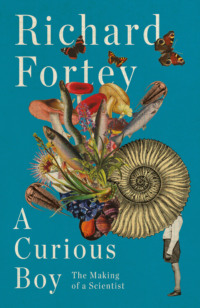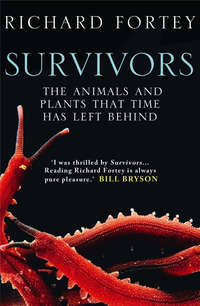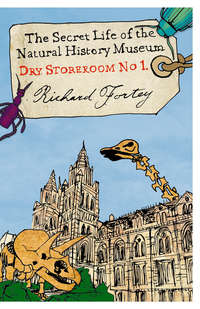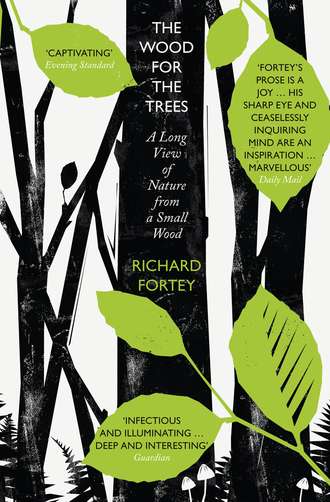
Полная версия
The Wood for the Trees: The Long View of Nature from a Small Wood
One cry is at odds with the general vernal celebration – a kind of wheezy, cross-sounding phrase repeated irregularly. Our pair of woodland buzzards are wheeling and gliding slowly round and round high overhead, as if barred from the general celebration below. Theirs is a simple call, almost like that of a baby working up to something more exciting. I had seen them yesterday flying through the wood itself: weighty, serious birds that appeared too substantial to negotiate their flightpath between the trees, something they nevertheless did with aplomb. Lambridge Wood is their patch. Beware, small rodents and unwary birds! If it turns out to be a good year for them, it will be a good year for the buzzards too.
Among the bluebells my eye is taken by something much more turquoise: a thrush’s egg lying on the ground. It looks so perfect at first glance; a Mediterranean-summer blue overlaid with just a few black dots. I then remark a ragged hole in one side – somebody has taken it from its clay-lined nest and consumed the contents. The buzzards are exonerated (too much of the egg survives); I suspect a grey squirrel. I cradle the empty shell in the middle of my palm. It is almost impossibly light. Surely this must be the first item for my wood collection; I must cherish it.
And then my eye is caught by a perfectly white bluebell, just one among so many thousands of the common kind. I suppose it should be called a whitebell. It is as rare as a sober Irishman on St Patrick’s Day, but much more conspicuous. It stands out from the crowd, visible yards away. It is the result of a natural mutation. If it were a successful mutation I suppose there would be many more of them, but there it is, living proof of that molecular part of the science of evolution that Charles Darwin did not know about. Just one tiny change on the DNA code and blue becomes white. Since most bluebell reproduction is from the proliferation of the bulbs, if I had a mind I could lift this example, nurture it in my garden, and artificially ensure its success. I could call it variety ‘Grim’s Dyke’. The origin of so many white garden flowers is thus revealed: white campanulas, that are so blue in the hedgerows; white pinks (never, after all, ‘pink whites’); white honesty; even white pelargoniums. Like the wild cherry, some are born white; others have whiteness thrust upon them.
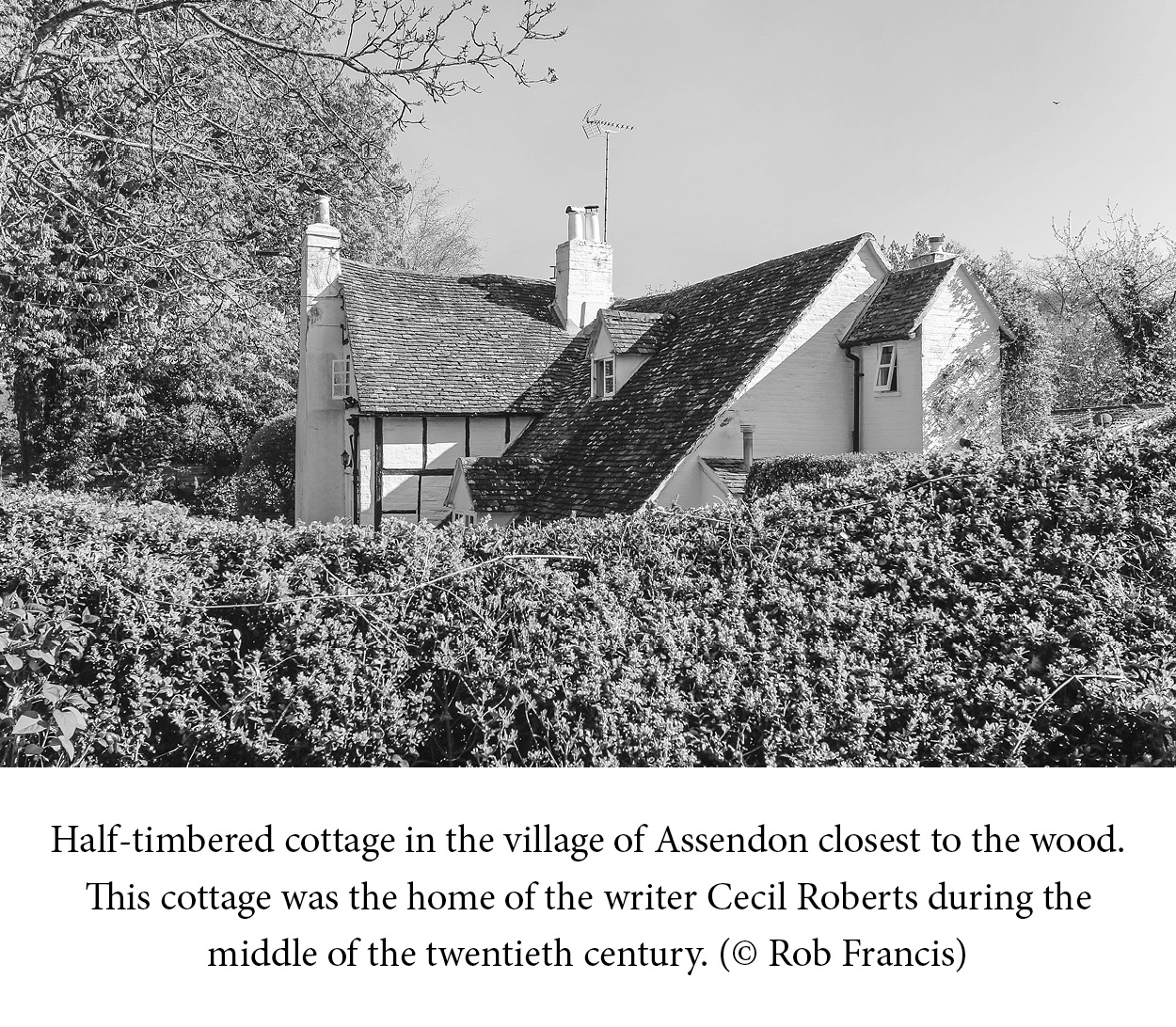
Ground elder soup
The first ground elder shoots (Aegopodium podagraria) are prolific near the edge of the wood. This plant is a notorious garden weed that, once established, is almost impossible to eradicate from the herbaceous border, but in a wood it makes a prettier sight and a more constrained patch. Its lobed and divided leaves appear well before parsley-like flowers. When the leaves are young and pale green, I discovered that they are a good vegetable; they become rank a month later. So there is a different way to view ground elder: as food! Ground elder soup is simple to make. A bagful of young leaves is gathered easily enough. The coarser stalks must be broken off, and the leaves are roughly chopped. A finely-sliced onion is softened by frying in butter, until it just starts to caramelise. At this point a medium-sized floury potato is added, chopped into small cubes, and placed with the leaves and onion in a heavy pot, and then a generous quantity of stock (or 1½ to two pints of water and a chicken or vegetable stock cube) together with a pinch of mixed herbs and pepper to taste. After it has been brought to the boil it is simply a matter of simmering over a low heat until the potato is soft, when the whole can be blended in a liquidiser. Croutons or a swirl of cream add a finishing touch. I should say that there are other wild members of the parsley family that are poisonous, most particularly hemlock. There should be no risk of mistaking the feathery leaves of hemlock for the rose-like leaves of ground elder, but if in doubt leave well alone.
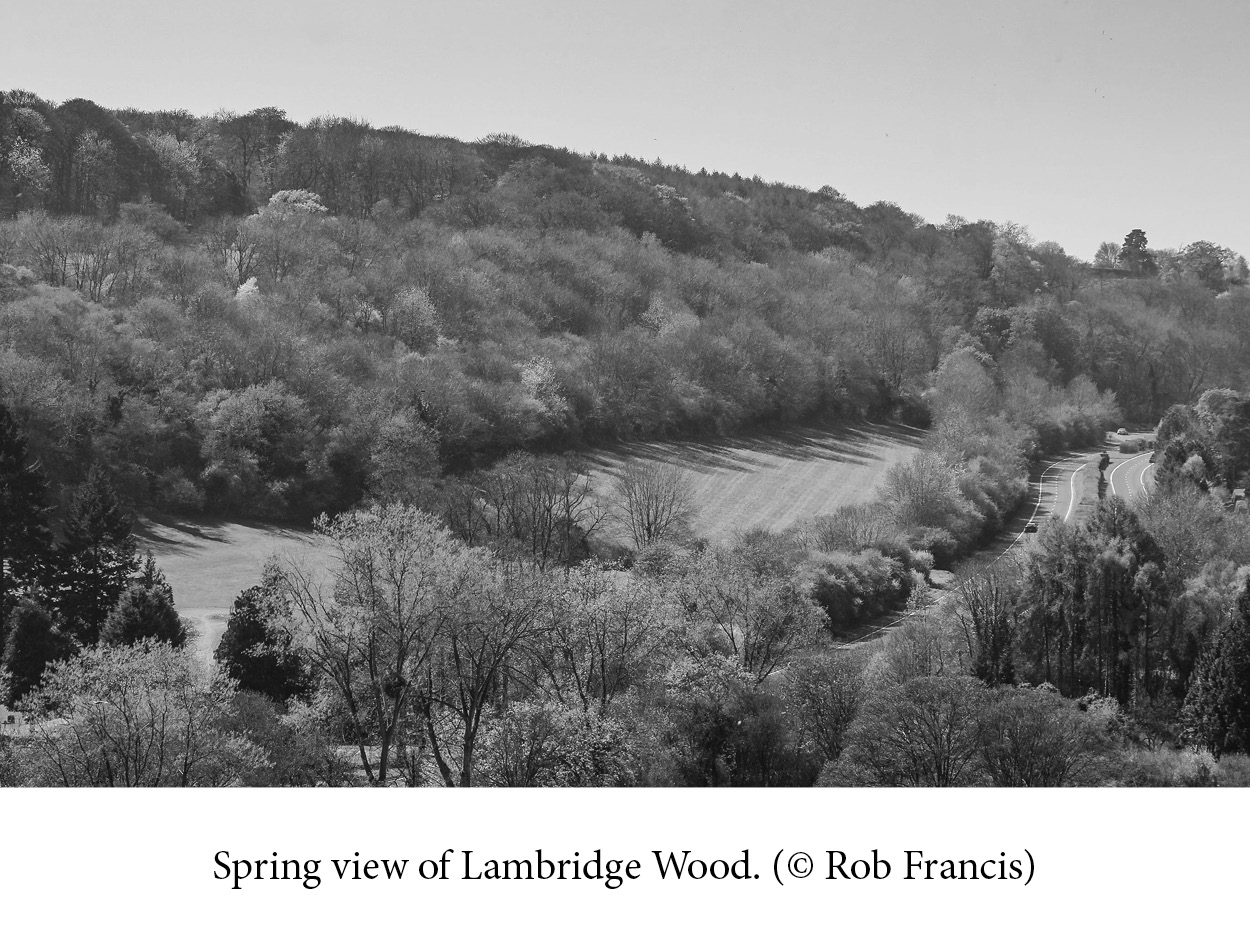
2
May
First felling
It has been raining for several days, but there is still not enough closed canopy aloft to provide any kind of shelter. The beech trunks are sodden, and now also distinctly green: rainfall has woken up tiny algae and liverworts living on the bark, and they are growing rapidly while they can. A large log near one of the paths has been rotting away for years, and what remains of its wood absorbs water like a sponge: maybe it was a standing cherry ten years ago. A bright-yellow lobe is growing out from one side of it, an excrescence both luminous and unnatural in its brilliance, like a glowing and irregular ox tongue. Every day it seems to add another inch or so, as if licking itself into further substance. The fungus is feeding on the wood: I know it as the fruiting body of the sulphur polypore (Laetiporus sulfureus).1 I have seen it on several trees, but it does have a common preference for wild cherry (Prunus avium). When it is further developed I know it will become more like a bracket, and on its underside hundreds of tiny pores will develop, marking the ends of tubes in which its spores are produced in their millions to waft away on the lightest breeze, randomly seeking out the perfect tree on which to germinate and prosper anew.
This damp period favours natural succulence – living things that are full of juice. On another part of the log three or four bright-pink-coloured balls are the size of small children’s marbles. They too look unnatural, like dropped beads of coral that have no place in a beech wood in England in spring. Prodded with a finger, they burst like boils, spattering pink juice. My daughter hates them, despite my protestations that they have a weird beauty. They are the reproductive spheres of a plasmodial slime mould, Lycogala epidendrum.2 As its common name implies, it was once thought of as fungal, but it is not a mould of any kind, though the sliminess cannot be gainsaid. Today the balls are forming everywhere in groups on the woodpile near the barn, dozens of them. They thrive in the damp. For the earlier part of their life cycle they moved along and through the forest floor, like amoebae, in a subtle but bounded transparent body with thousands of nuclei, where they soaked up nutrients from decaying organic matter. If my daughter were to say they were creepy at this stage, that would be no less than the truth. They creep and they grow. When they have grown enough – and it is an interesting question just what it is that says, ‘Enough!’ – they change character more thoroughly than did Dr Jekyll to Mr Hyde. They glide up to a higher piece of dead wood to turn into those pink balls. At this stage the transformation is incomplete, but in a week or two the balls will have turned brown and become much less conspicuous. A few weeks later they will have transformed into masses of umber-brown microscopical spores – dust, to the eye – and will then be blown to the four winds. On another piece of wet wood I discover a weft of tiny, white, delicate gelatinous fingers hanging down like stalactites: it is another ‘slimer’ (Ceratiomyxa fruticulosa). There’s a sudden vision of the wood as a mass of almost invisible cells sliding and questing through the dampness.
The sun returns at last, and with it a gentle breeze. The weak solar rays pick out the fluttering foliage of freshly unfurled beech leaves in the softest shades of pale green – almost yellow in a certain light. On the ground lie hundreds of tiny brown bracts that had encased the nascent leaves over winter in thin, spiky buds. Now they are redundant. I examine a new beech leaf under a lens: it is fringed with white hairs more delicate than a baby’s eyelashes. It has not yet acquired anything of its summer rigidity; it is like tissue paper. On the low branches of the trees the leaves quiver gently, making tiers of light thrown into contrast against the unchanging dark of the holly. It is almost as if we were under water, and the leaves were being stirred by invisible currents. Where the sun sneaks through the forest to illuminate the cherry trees the polished surfaces of their bark shine almost silver.
Cousin John is felling a beech tree that is leaning dangerously over the public footpath. Accidents in woods caused by falling branches are very rare – most people have the sense to stay out of the woods during tornados. But beeches sometimes shed a whole branch just for the hell of it: these are called ‘widow-makers’ (they never fall on girls). We cannot have that happen to a passing dog-walker. John starts with a saw on a long pole to trim off the side branches. One of them almost touches the ground, such is the curve on the tree over the path. He can reach more branches with a chainsaw borne aloft on a staff; then, with a bigger chainsaw, the main action. The saw makes a raucous, grating racket, with something of the unforgiving persistence of the dentist’s drill about it. John is a professional, so he sports massive earmuffs and mighty gauntlets. Bystanders are reduced to making encouraging gestures and gurning amiably.
There is only one way for the tree to fall, but there is a skill to making the cuts so that it does not spring any surprises. The poor beech groans, crackles like a fusillade of fireworks, and then it is down, just like that. With a girth of three feet there is a lot of firewood to be mined. Despite its lopsidedness the tree is still very much alive, so now on the ground its branches stick up all stiff and unnatural, decked in new leaves that flutter in the breeze for the last time. They will be limp by next morning. The centre of the trunk proves to be quite rotten – black, and hollowing out. The tree would have cracked eventually, so it was as well we took it down. The fungal damage extends further up the trunk until it is visible only as a curious kind of dark hieroglyph in the centre of the log. John cuts lengths from the upper part of the tree that will be taken away in his van to be sawn into rounds, then split into logs for next year’s open fires at home. The fat end of the tree is winched into a position where we can use it as a rustic seat in future and study its slow decay. The brash is carried into the wood to rot away and return to the soil. Who would believe that one, not particularly large, tree could generate so much work?
Falling beech branches have crushed a few bluebells, but no matter, they are already showing signs of decline. The great sea of blooms has deepened to an azure colour, and still looks unbroken from afar, but the lower flowers on the spikes are already blousy and fading. Their dark-green blades of leaves have lost the vigour of their youth, and have started to become flaccid and unenthusiastic. But as one flower starts to fade, another prospers.
Patches of ground near the bluebells are covered with neatly tiered rosettes of lance-shaped leaves. A cluster of tiny white flowers crowns each tier; this plant is the perennial sweet woodruff (Galium odoratum), no taller than the bluebell. Each flower in the cluster has only four wee petals; under my lens the edges of the leaves can be seen to be lined with minute prickles that can be felt by gingerly stroking a finger along their margins – usually eight delicate leaves to a whorl. As for the sweetness implied in both the common and the Latin name, this little plant has a fragrance more persuasive than that of any bluebell. Its sweetness grows as the woodruff is dried – which it does readily. I placed a bunch in a warm airing cupboard and it was preserved in a day. Dried woodruff was once slipped between the sheets to sweeten bedding, so the sleeper might dream of woods in spring. The scent of new-mown hay is the same chemical agent (coumarin) as in woodruff, but only if that hay has sweet vernal grass as one of its components. Sweet woodruff is used to flavour traditional springtime drinks and sweets in Germany, though its German name of Waldmeister (‘master of the woods’) seems too assertive for such a refined little plant. My son thought to try it as a ‘botanical’ to flavour gin; there has been a revival in boutique spirits, and he wants to be ahead of the Zeitgeist. Although juniper berries are the traditional flavoring for gin, all kinds of refinements are possible by steeping other herbs and spices in the spirit. Experimental Batch Number One was rather overpowering, but Experimental Batch Number Two turned out to be delicious. It was presented with a tasteful label featuring the wood in spring. Grim’s Dyke Gin may yet feature in some future genre market.
Bluebell and sweet woodruff are specialists. Not every bulb or herb can thrive in our beech woodland. Timing is all. These plants have to steal as much light as they can before the canopy shuts off the sunshine. There is really no option but to flower in spring. They join the dog violet and the lesser celandine in the early shift. Wood melick, which makes something approaching a field of lively green over parts of the wood in May, will produce its nodding rod of single flowers and then fade before summer is over. The bluebells’ burst of photosynthetic activity is done even before the beech leaves mature, and the energy the plants have gained during their brief but glorious exuberance is stored in the bulb. Job done, everything above ground withers away. The lesser celandine’s3 pretty, heart-shaped leaves also enjoy but a brief existence; they soon turn yellow and shrivel. They too sequester energy in little cream-coloured, bulb-like storehouses that linger in a somewhat scrotal cluster below the ground through most of the year. I have seen similar-looking bulblets form at leaf junctions, any one of which might produce a new plant next season. The leaves of sweet woodruff and violets linger on, a little dowdily, after flowering, but the woodruff has a strong root network that can survive a major drought unharmed. I add two more pleasing spring flowers discovered from snuffling around in the wood: a discreet purple-flowered wood speedwell, Veronica montana, modestly creeping along a pathside where there is a little more light, and a pretty buttercup, goldilocks (Ranunculus auricomus), with apparently much the same requirements. Both have the kind of understated beauty that rewards a little botanical nous.
Our slowly spreading English bluebell is a marker for ancient woodlands. Stately wood spurge (Euphorbia amygdaloides) tells the same story, and I have found it in four places. It almost makes a small shrub. Its young, leafy shoots are a lovely coppery hue and slightly pendent, contrasting well with the flowering heads, which are a lively green. All spurges have peculiar flowers, unlike those of any other plant. They have none of the usual paraphernalia: no petals or sepals, and the reproductive parts are reduced to the minimum. What could be mistaken for petals are actually yellow-green leafy bracts that form a kind of cup around the minimalist sexual business. A cluster of these distinctive structures makes the flower head. Unlike lesser celandines and bluebells, the spurge plant stays on in the wood, gradually losing its fine vernal contrasts, and fading with dignity. I have seen spurge species thriving in deserts looking just like cacti, and others creeping on seashores, and yet more growing far too vigorously in my vegetable patch, so it is scarcely a surprise to find one species that likes to live in old Chiltern beech woods. All spurges carry a horrible, poisonous white sap that seeps out if a leaf or stem is broken. Once I accidentally rubbed a minute amount of the milk into my eye and danced around for two hours in excruciating agony, weeping profusely. I cannot recall such a painful reaction since they closed my favourite Chiltern pub (the Dog and Duck).
Men of letters
Writers are not a rare species. They seem to crop up everywhere, rather like spurges, although some are less poisonous. I confess that at first I thought I would have my patch of Chiltern Hills beech woods to myself. I was wrong. Over the brow of the ridge behind Lambridge Wood Barn, in the village of Lower Assendon, and just beyond the Fair Mile leading out of Henley-on-Thames in the Oxford direction, a small Tudor cottage decked in oak beams was home for several decades to a famous writer: Cecil Roberts. In the 1930s Roberts published a series of three books centred on Pilgrim Cottage: Gone Rustic, Gone Rambling and Gone Afield. I now have them all in hardback, though had I not bought Grim’s Dyke Wood I would probably never have heard of this particular author. Gone Rustic was reprinted at least six times: it was a bestseller. All the books are charming, gossipy, name-dropping confections about life in a kind of idealised Rustic. Beneath the dustjackets they have bas-relief covers with cottagey timber framing built in. Roberts’s is the same world as that in which Hercule Poirot joined genial house parties in small stately homes only to find His Lordship dead in the drawing room. It has an exact fictional match in E.F. Benson’s Mapp and Lucia novels, set in a genteel part of Sussex where private incomes would pay for housekeepers and cooks, and the protagonists could concentrate on painting watercolours and choosing chrysanthemum varieties. Working-class country folk tended to have only colourful walk-on parts.
According to Cecil Roberts’s account in Gone Rustic, he discovered Pilgrim Cottage in 1930 by accident after sustaining a puncture on the road from Henley to Oxford. He writes: ‘Around me the view was imposing, almost Tyrolean, with steep larch covered hillsides, and in the distance between thick beech woods nobly clothing the greensward, a ravine.’ The last may have been a reference to the gentle valley leading to Stonor. Pilgrim Cottage is still much as it was in the middle of the twentieth century. Cecil’s upstairs windows would have commanded a view of Lambridge Wood on the near skyline, so he really was a neighbour. I imagine him fussing around his garden, absorbed in his gladioli, while instructing his housekeeper to lay tea for the Marchesa, who would be arriving betimes in the Hispano-Suiza. Pilgrim Cottage, he complained, was positively deluged with visitors, all of them fascinating, making the necessary wielding of his pen a matter of some concern. In spite of all his socialising, he did manage to produce a quantity of books and much verse. The core of his Pilgrim Cottage books is provided by local history, well described, and much of it relevant to my story; and his tales of local craftsmen are invaluable. His other love is Italy, and he jumps to Venice and palazzos and the story of the Finzi-Continis at every hint of a metaphor. His interest in natural history was as perfunctory as his interest in gardening and sunbathing was obsessive. The Chilterns provided a green backdrop to his real concerns, which were always human.
Cecil Roberts had another life during the Second World War. Pilgrim Cottage and its stories had a great following in the United States. Their appeal may have been rather akin to the current popularity of sagas featuring big houses and their goings-on a century ago. Roberts was recruited to aid the war effort by giving lecture tours in America, which he evidently did with great success. The New York Times reported that ‘the best propaganda in the world is the British and the most efficient expression we witnessed were the lectures held all over the USA by the noted author, Cecil Roberts. These lectures never had the flavor of propaganda but brought more good will towards Britain than anything else.’4 His charm could obviously do its work far away from the Thames Valley.
When the conflict was over Roberts felt he had not received sufficient official recognition for his efforts. He tried to restore the balance by publishing his autobiography in no fewer than five volumes. Rowena Emmett, daughter of Mr and Mrs Plater, the next occupants of Pilgrim Cottage in 1953, told me that for many years beaming Americans would turn up at their garden gate requesting permission for photographs. ‘It was,’ she said, ‘quite a nuisance.’ The former owner did not downplay the fame of Pilgrim Cottage. He had written to the Platers advising, ‘many thousands all over the world love it, for it symbolizes England for them’. When Rowena met Cecil Roberts she was a young schoolgirl, and she found him more than a little alarming. She later realised that his manner was just very camp. A modern reading of Gone Rambling would leave little doubt about the author’s sexual orientation, with its panegyrics to bare-chested Italian sawyers whose ‘skin, tanned a warm mahogany by the Venetian sun, gleamed and caught a hundred tones and facets of light as the muscles glided with cryptic strength beneath their satin sheaths’; to say nothing of some very ambiguous poems.
I cannot help wondering how Cecil Roberts might have been regarded by the locals in the Golden Ball in those less tolerant times. Maybe they just thought he was from London. He seems to have been genuinely helpful with his time and money in the village, and nearly always described its inhabitants sympathetically. He appreciated the efforts of his gardeners, including Charles Crewe, who lived in a damp dwelling with none of the usual services on the very edge of Lambridge Wood. Roberts was determinedly anti-fascist. I was surprised to learn that his origins in Nottingham were far from aristocratic. He was a self-made man, living mostly from his prolific pen, whose name-dropping was probably an exuberant validation of his reinvention. ‘Mon dieu!’ his special and amusing spinster friend Miss Whissitt might have exclaimed. ‘Tu es une arriviste!’
H.J. Massingham is altogether more astringent. His 1940 book Chiltern Country deals with the whole range of hills in luminous language. His feel for natural observation is superb. Much of his work is driven by fury about the spread – no, the rash – of homely villas outwards from London. He mourns the ‘real England, the England in which the hills, the vales, the waters, the crops, the roads, the buildings, the natives and the rock that bore them up all on its back were intricately bound together in an organic system not unlike the human body’.5 The country cottages that have withstood the centuries – and the worthy souls who have earned their living around them for as long – are becoming overwhelmed by red-brick mediocrities planted about with shrubs that don’t belong. Beech woods become desirable scenic accessories rather than essential resources. For Massingham the country beyond Rickmansworth was irretrievable, and the country around High Wycombe was doomed. The spread of the Metropolitan Line from London into the hills was a sinister fungus that sprouted despicable edifices – suburbia: ‘the touch of it annihilates identity in place’. His ruralism stands at the other extreme to the poet John Betjeman’s sympathetic regard for what he termed ‘Metroland’, a land of healthy young women and clean semi-detached gentility.
Massingham’s combativeness is quite appealing. I think he would fain have jumped back in time way past the Enlightenment to fetch up somewhere in the late medieval period. He reserves his most eloquent writing for our piece of country, and most particularly Stonor Park, ‘the heart of the Chilterns’, where the wild spirit of the place has not yet been ousted, the views not hopelessly corrupted with eyesores. I have no proof that he ever visited our woods, but I hope he would have found the genius loci satisfactory there, too. I am certain he would have disapproved of the practice of ‘splitting’ to sell off ancient woodlands, thereby dividing the integrity of manors that had been in existence for nearly a thousand years. There is no defence, except to say that I could never have afforded to buy a whole stretch. There are plenty of very wealthy people in the hills who don’t appreciate the unique treasures they have on their land, and my small patch is much loved.
Just over a century before Cecil Roberts was pottering around his garden in Lower Assendon, John Stuart Mill was exploring our Chiltern countryside with a far more scientific enthusiasm. The philosopher and political theorist was equally a dedicated and scholarly botanist. Very few people can instantly recognise rare plants like wintergreens (Pyrola), but J.S. Mill was one of them. From his early days he was a close friend of George Bentham (nephew of Jeremy), who would become one of the greatest botanists of the Victorian age. Mill made an expedition in France in search of poorly known flora. His house in Kensington Square in London was virtually a herbarium. Some people who are not naturalists find it odd that famous thinkers, poets or mathematicians might derive as much pleasure from the minutiae of natural history as from the fields of endeavour that made them famous. Vladimir Nabokov was as serious about blue butterflies as he was about writing novels, but certain critics relay this fact as a kind of eccentric footnote to the life of the artist. Doubtless they perceive that less time frittered away with the butterflies might have resulted in one or two more novels. Can they not see that the taxonomic eye applied to recognising the subtlest nuances of difference in butterflies is the same eye that spots the deceptions and evasions in human motivation? The capacity to make accurate observations is a special genius, and it is not limited to focusing on one particular bipedal subject species.


